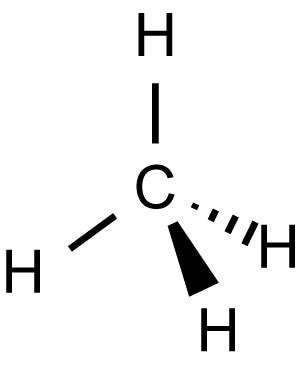Structural Representations of Organic Compounds
We know that the structural formula refers to the illustration of a compound which shows the arrangement of the atoms inside it. However, when representing organic compounds, the carbon atoms and the hydrogen atoms attached to them do not necessarily have to be drawn. For example, both of the following structural representations are valid structural formulas of normal butane \((\text{C}_4\text{H}_{10})\):
 Imgur
Imgur
The figure on the right is known as the skeletal formula. Observe that the vertices represent the carbon atoms and that all the hydrogen atoms bonded to the carbon atoms are not shown.
However, all atoms that are neither carbon nor hydrogen must be displayed. The following is the skeletal formula of dichloroacetic acid:
 Imgur
Imgur
Note that the chlorine and oxygen atoms must be displayed. Also, the hydrogen atom attached to the oxygen atom must be drawn, since it is not bonded to a carbon atom. Since every neutral carbon atom must have four bonds, there must be a hydrogen atom attached to the carbon atom that is bonded to two chlorine atoms.
How many carbon atoms and hydrogen atoms does the following molecule have?
Imgur
Every vertex represents a carbon atom, and any carbon having less than four bonds must have hydrogen atoms attached to them so that every carbon atom has a total of four bonds. Thus, the full structural representation of the given molecule is as follows:
Imgur
Therefore the given molecule consists of 10 carbon atoms and 8 hydrogen atoms, and its chemical formula is \(\text{C}_{10}\text{H}_8.\) The given molecule is called naphthalene and the IUPAC name for this compound is Bicyclo Deca-1,3,5,7,9-pentene, which is the main ingredient of mothballs. \(_\square\)
Wedge and Dash Representation
Wedge and dash projection is a means of representing a molecule (drawing) in which three types of lines are used in order to represent the three-dimensional structure:
(1) solid lines to represent bonds which are in the plane of the paper;
(2) dashed lines to represent bonds that extend away from the viewer;
(3) wedge-shaped lines to represent bonds oriented facing the viewer.
Example: Structure of Methane \((\text{C}\text{H}_{4})\)

Saw-Horse Projection
It is a way of representing an organic compound from a rather oblique angle to study its conformations. It is a very efficient way of studying conformations of a compound along with its optical character as it is easily convertible into Fischer projection and Newman projections. In this representation, we observe two carbon atoms bonded with each other along with the groups attached to them from an edge view unlike that in Newman projection in which we observe it from front view.
This here is a saw-horse projection of \(n\)-Butane:
Notice how the perspective is different from that of a Newman projection.
Just as in Newman projection, the saw-horse projection can be eclipsed, staggered, and gauche.
Here are staggered and eclipsed conformations of ethane:
